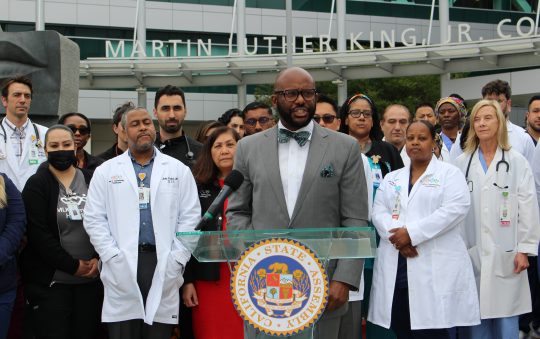
Over the years, we have seen time and time again the racial disparity that people of color have faced in the world of healthcare. Multiple studies can show Black men and women suffer more due to lifestyle methods and efforts that can ultimately change someone’s life. This racial disparity in healthcare comes in all forms, including radiation cancer treatment.
Use of a high-tech radiation cancer treatment called proton beam therapy (PBT) has increased overall in the United States over time, but Black patients are unfortunately getting it less often than White patients, according to two new studies that have been researched and shown.
Traditional radiation treatment is photon-based, but PBT uses protons to deliver high-energy beams more accurately to tumors and reduce the amount of damage to the surrounding tissues.
According to the American Cancer Society, PBT can be more effective than traditional radiation therapy for tumors, including tumors surrounded by sensitive tissues and childhood cancers, but with more effectiveness comes more expenses.
To assess the use of PBT in the United States, researchers analyzed and collected data on nearly 6 million patients in the National Cancer Database. They found that overall use of PBT for patients that have been newly diagnosed with cancer rose from 0.4% in 2004 to 1.2% in 2018.
The most common type of insurance among patients treated with PBT for recommended cancers was private coverage, while Medicare was the most common insurance among patients treated with PBT.
The study also found that Black patients on average, were less likely to be treated with PBT than white patients (0.3% vs. 0.5%), especially for select cancers for which PBT is more commonly recommended over traditional radiation therapy.
This percentage widened as the number of facilities offering PBT grew, and the disparity did not disappear after the researchers considered and accounted for socioeconomic status or type of health insurance.
Senior principal scientist at the American Cancer Society and lead author of both studies, Leticia Nogueira, said in a statement: “We found that PBT use increased nationally between 2004 and 2018 for all eligible cancers, especially for cancers for which PBT is the recommended radiation treatment. Especially concerning, however, was that our findings also showed racial disparities increased as availability of PBT increased in the U.S.
“Our findings, unfortunately, highlight the fact that Black patients continue to benefit less from advances in medicine like PBT, even with increased availability of recommended treatment modalities,” Nogueira said. “Efforts other than increasing the number of facilities that provide PBT will be needed to eliminate these disparities.”
Be on the lookout for more updates as the studies continue to grow.







